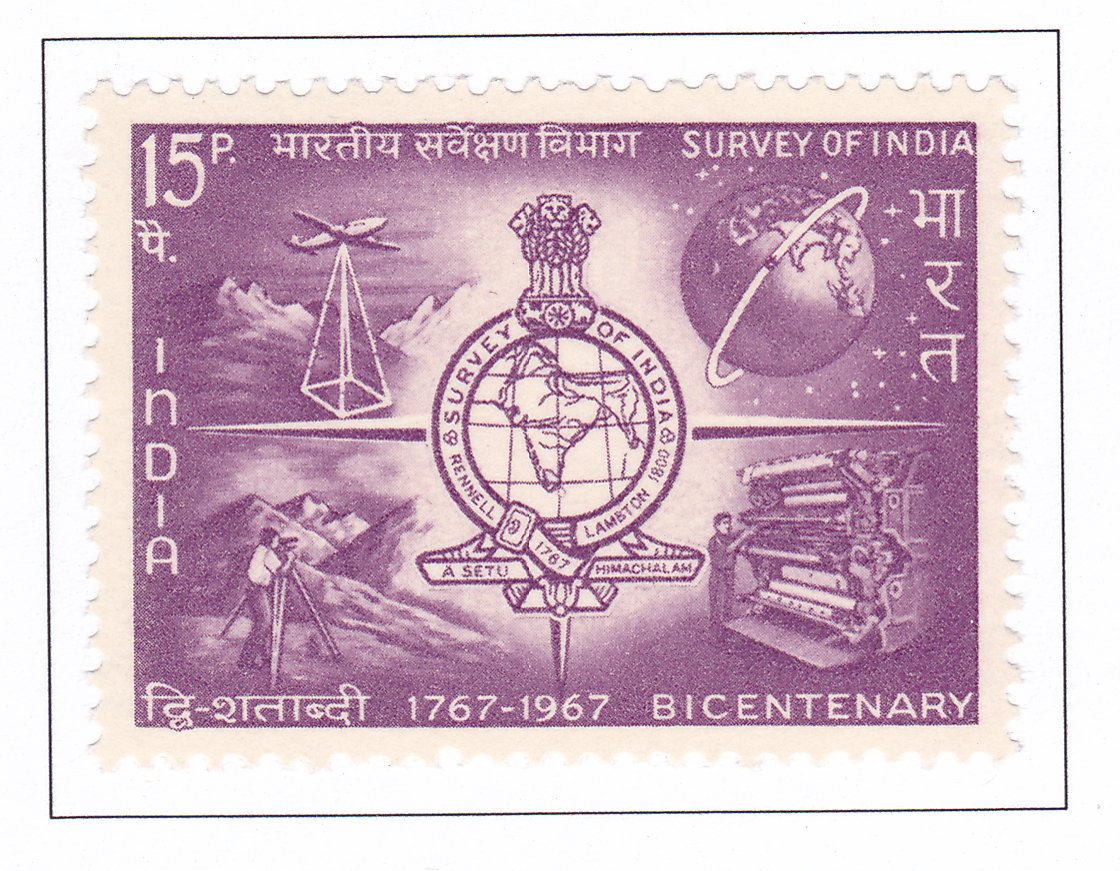Bicentenary of Survey of India

Technical Data
| Date of Issue | May 1, 1967 |
|---|---|
| Denomination | 15 nP |
| Quantity | 2,000,000 |
| Perforation | comb 13½ x 13 |
| Printer | Security Printing Press, Nashik |
| Watermark | No Watermark |
| Colors | Lilac |
| Catalog Codes |
Michel IN 426 Stamp Number IN 449 Yvert et Tellier IN 221 Stanley Gibbons IN 547 |
| Themes | Anniversaries and Jubilees | Geodesy and Surveying | Globes | Maps | Measuring Instruments | Organizations | Seals(Emblems) |
The Bicentenary of Survey of India, founded in 1767, celebrated its bicentenary in 1967, making it one of the oldest scientific organizations in the country. Over the centuries, it has made significant contributions to the fields of Geography, Geodesy, and Cartography. Notably, it discovered and measured Mount Everest, the highest peak in the world, which bears the name of Sir George Everest, one of its eminent Surveyor Generals.
Before the commencement of any major project, the Survey of India is often consulted due to its expertise in mapping and surveying. Its work also holds special significance in matters related to national defense, as it provides crucial maps for strategic planning.
The Great Trigonometrical Survey, a monumental achievement of the Survey of India, established precise geodetic control points across the country, which proved invaluable. The department has also made notable contributions to fields like Positional Astronomy, Gravimetry, Geomagnetism, and Tidal Predictions.
India’s reputation as the home of the theory of Isostasy owes much to the contributions of Survey of India officers. Additionally, the department boasts one of the largest map printing organizations globally, and it pioneered the Vandyke printing process.
The Survey of India has also played a significant role in the exploration of unknown regions, with names like Nain Singh and Kishen Singh etched in the annals of adventure and courage.
The Indian Posts and Telegraphs Department paid tribute to the Survey of India’s bicentenary by issuing a special commemorative stamp on May 1st, 1967, acknowledging its invaluable contributions. It also recognized the historical significance of the Survey of India, as it was responsible for printing India’s first postage stamps in 1854.
